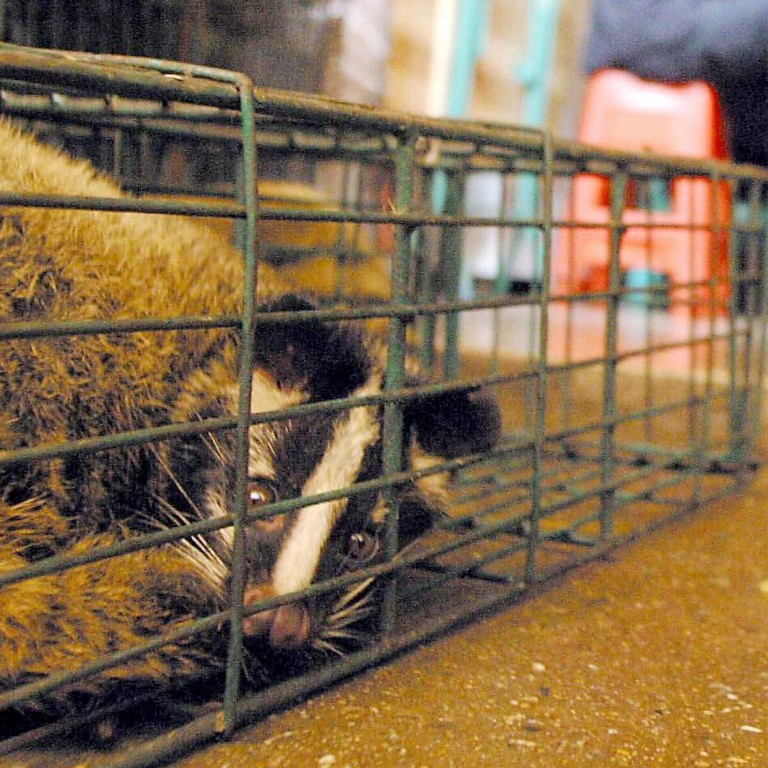
Human pressure on wildlife increases risk of diseases like Covid-19, study finds
- Hunting, wildlife trade and threats to habitat key factors in viral spillover
- Research adds to growing evidence about the role of humans in the emergence of new infections
That was the key finding of a study published on Wednesday by a group of researchers at the University of California, Davis which looked for trends among the animal species known to host viruses that have infected humans.
While genetics and chance are among the factors that determine whether a virus can spill over from animals to people, the study highlights the human role driving the risk of the phenomenon behind the current pandemic, which so far has sickened more than 1.5 million people.
Animals threatened with extinction by human degradation of their habitat, or through hunting and the wildlife trade, hosted twice as many viruses known to infect people, compared with species threatened for other reasons, the researchers found.
Coronavirus versus Sars – a tale of two viruses
“Spillover of viruses from animals is a direct result of our actions involving wildlife and their habitat,” said lead author Christine Kreuder Johnson, director of the EpiCentre for Disease Dynamics at the One Health Institute, a UC Davis School of Veterinary Medicine programme.
“The consequence is they’re sharing their viruses with us. These actions simultaneously threaten species’ survival and increase the risk of spillover. In an unfortunate convergence of many factors, this brings about the kind of mess we’re in now.”
The research examined around 140 zoonotic viruses that infect humans and had been found in specific animal species before 2014. It looked for trends among those species, using data from the International Union for Conservation of Nature and Natural Resources’ Red List of Threatened Species.
The findings add to a growing body of evidence about the role of humans in the increasingly frequent emergence of infectious diseases in recent decades.
One virus caused Covid-19; scientists say thousands more are in waiting
Scientists and public health organisations have long been calling for more attention to be paid to the role of increased encroachment on animal habitats in the emergence of infectious disease outbreaks.
Deforestation, urbanisation and the expansion of agriculture have all brought more contact with these species as the human population has more than doubled since 1960, they have warned.
The research, published in the journal Proceedings of the Royal Society B, found that, historically, domesticated animals were the largest mammalian contributors of infectious viruses, because of their regular close contact with people.
Domesticated animals, including livestock, shared eight times more zoonotic viruses with people than wild mammals, such as H1N1 flu, hantaviruses and rabies.
The researchers pointed out that sprawling human populations had created more opportunities for people to live in proximity with wild animals. Rodents, bats and primate species living near homes or farms – in some cases expanding their populations near settlements – presented a high risk for ongoing transmission of viruses to people.
Rodents, bats and primates – representing more than 70 per cent of all terrestrial mammal species – were together implicated as hosts for three-quarters of zoonotic viruses, they found. Bats are thought to be the originators of a number of viruses which cause diseases in humans, including severe acute respiratory syndrome (Sars), Nipah virus infection – and Covid-19.
That the greater levels of human and animal interaction would lead to more spillovers of disease from animals to humans was no surprise, according to veterinary epidemiologist Dirk Pfeiffer, a professor of One Health at Hong Kong’s City University, who was not involved in the research.
“If you have these human animal contacts more often, because of population density and people doing things where that contact occurs more frequently, eventually it will go wrong,” he said.
What next for China’s wildlife ban?
Improving coordination between doctors, veterinary surgeons and ecologists, under the One Health model, upping biosecurity on farms, and surveillance of disease in animals and humans were all important steps to cut down on risk and prevent the next pandemic, said study co-author Peta Hitchens, a senior research fellow and veterinary epidemiologist at the University of Melbourne.
“There will be more viruses that jump from animals to humans in the future, and our ability to react to that will get better, including controlling infections before they can get out of control and producing vaccines in a more efficient manner. We’ll get there – we can only learn from this experience,” she said.
Sign up now and get a 10% discount (original price US$400) off the China AI Report 2020 by SCMP Research. Learn about the AI ambitions of Alibaba, Baidu & JD.com through our in-depth case studies, and explore new applications of AI across industries. The report also includes exclusive access to webinars to interact with C-level executives from leading China AI companies (via live Q&A sessions). Offer valid until 31 May 2020.

